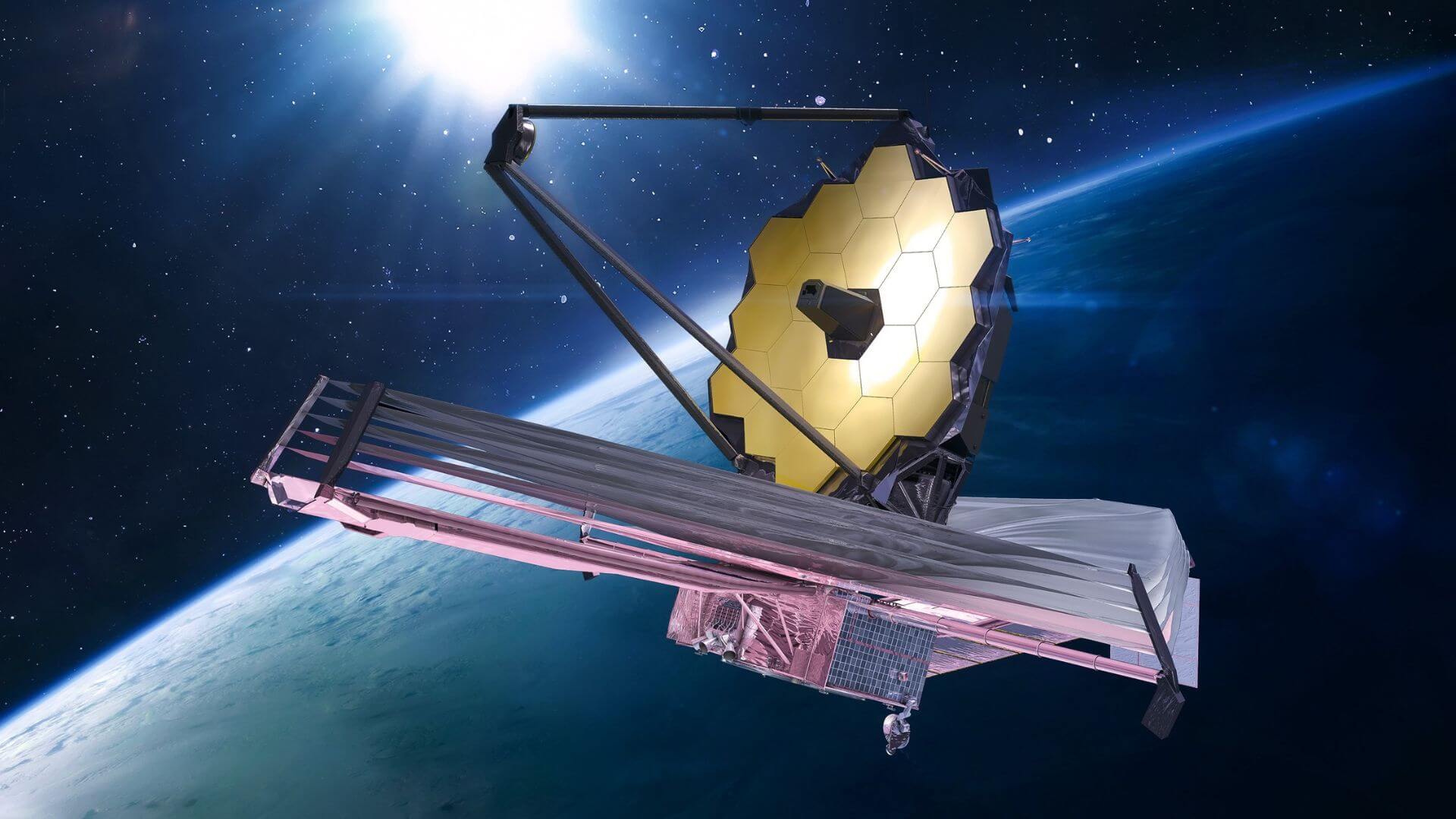Although there are still many operations to be done before the observatory is completely ready, the deployment of this parasol was the most complicated step
The James Webb Space Telescope passed an important milestone on Tuesday by fully deploying its heat shield, a five-layer sunshade needed to observe the cosmos. Although there are still many operations to go before the observatory is completely ready, the deployment of this sunshade was the “most difficult” on the list, recalled Thomas Zurbuchen, head of NASA science missions, in a statement.
Each layer of this heat shield is the size of a tennis court and is needed to protect scientific instruments from the sun’s heat. Since Monday, each layer has been unfolded and stretched.
The telescope is too big to fit on a rocket so it had to be folded in on itself like origami and deployed in space, an extremely dangerous procedure.
“It’s a very special day,” tweeted astronomer Klaus Pontoppidan, chief scientist at the James Webb. “I think it’s time to realize that we may soon have a fully operational giant space telescope.”
Astronomers from all over the world eagerly awaited James Webb, the most powerful space telescope, because it will allow them to observe the first galaxies, formed a few hundred million years after the Big Bang.
The observatory took off just over a week ago from French Guiana and is currently more than 900,000 kilometers from Earth. It is on its way to its final orbit, 1.5 million kilometers from us, that is, four times the distance between the Earth and the Moon. In this place, if a problem should arise, a repair mission cannot be foreseen.
Its deployment, piloted from Baltimore on the US East Coast, was to be carried out smoothly. More than a hundred engineers took turns to night and day to make sure everything went according to schedule. NASA broadcast it live on the internet. As there is no camera onboard James Webb, the only footage available was from the operations control room. The team erupted in jubilation as soon as the deployment was over.
“The atmosphere is difficult to describe. It was an amazing moment. There was a lot of joy, a lot of relief,” Hillary Stock, in charge of deploying the sunshade at Northrop Grumman, a NASA partner, told reporters. “Everything went well,” she added.
The parasol measures about 20 meters by 14 and has a diamond shape. Their hair-thin cloaks had been folded like an accordion and now stretched to within a few dozen centimeters of each other.
They are made of Kapton, a material chosen for its resistance to extreme temperatures because the side closest to the Sun can reach 125°C, and the farthest -235°C.
Its deployment was possible thanks to hundreds of pulleys and meters of cables to guide them, as well as motors to stretch each sail, from each point of the diamond. On Monday the first three layers were successfully unfolded and stretched. On Tuesday morning, the teams did the same with the last two. Earlier the two “paddle structures” containing the sun shield were activated. This heat shield is essential because James Webb’s science instruments only work at very low temperatures and in the dark.
The great novelty of this telescope is that it will operate through the near and medium infrared spectrum, wavelengths invisible to the naked eye. In order to be able to detect the weak light coming from the confines of the universe, it cannot be affected by the radiation of the Sun, but nor by those sent by the Earth and the Moon.
The next step is the deployment of the mirrors: first a secondary, smaller one placed at the end of a tripod, and then the main one, covered in gold and measuring about 6.6 meters in diameter. Once set up, James Webb will arrive at its destination, known as Lagrange point 2. Instruments will then have to be cooled and calibrated and mirrors adjusted very precisely. Six months after liftoff, the telescope will be ready to go back to the origins of the universe and search for habitable environments outside our solar system.
